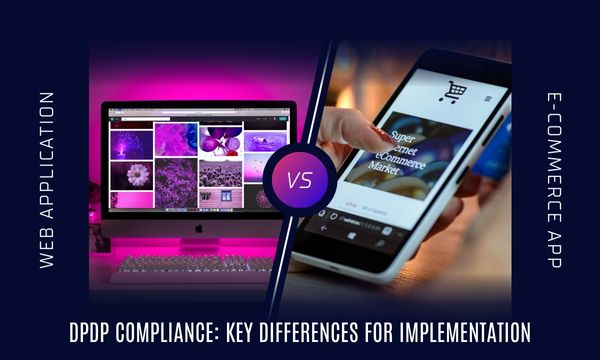
In today’s healthcare environment, data is as vital as the care itself. From patient records to medical devices, the healthcare sector is increasingly reliant on interconnected systems to deliver services. While this digital transformation has improved patient outcomes and operational efficiencies, it has also introduced a significant new risk: data breaches. With cyberattacks on the rise, healthcare providers must be vigilant about their cybersecurity practices to protect sensitive information and comply with strict regulations such as HIPAA.
One of the most effective ways to safeguard healthcare data is through penetration testing (pentesting). By simulating real-world attacks, pentesting helps healthcare providers identify vulnerabilities in their systems and ensures compliance with regulations. In this blog, we’ll explore the importance of pentesting in the healthcare industry, highlight relevant regulations like HIPAA, and examine real-life security incidents that underscore the critical need for enhanced security measures.
The Rising Threat of Data Breaches in Healthcare
Healthcare providers are among the most attractive targets for cybercriminals. The reason? Healthcare organizations store vast amounts of sensitive data, including personal health information (PHI), payment details, and even genetic information. Unlike financial data, which can be easily changed or cancelled, healthcare data is permanent and, therefore, much more valuable on the black market.
In fact, according to a report by IBM, the average cost of a healthcare data breach reached $10.93 million in 2023, more than in any other industry. The impact of a breach goes beyond financial losses, affecting patient trust and the organization’s reputation, while also attracting regulatory penalties for non-compliance with data protection laws.
Regulatory Landscape: Why Compliance Matters?
For healthcare providers, adhering to regulatory standards like the Health Insurance Portability and Accountability Act (HIPAA) is not just a legal obligation but also a critical part of their cybersecurity strategy. HIPAA mandates that healthcare organizations implement a robust set of security measures to safeguard patient data, with heavy fines imposed on those who fail to comply.
Penetration testing plays a crucial role in meeting HIPAA’s Security Rule requirements. The rule calls for regular risk assessments to identify potential vulnerabilities in electronic PHI (ePHI) systems and to implement appropriate safeguards. Pentesting fulfils this requirement by testing the organization’s security defences in a real-world context.
Key HIPAA Provisions Relevant to Penetration Testing:
* Risk Analysis and Management (45 CFR 164.308(a)(1)(ii)(A)): Healthcare providers must conduct a thorough risk analysis to identify potential vulnerabilities that could compromise ePHI.
* Technical Safeguards (45 CFR 164.312): This section mandates that covered entities implement access control, encryption, and audit controls to ensure the confidentiality and integrity of ePHI.
* Evaluation (45 CFR 164.308(a)(8)): Regular evaluations, including pentesting, are necessary to ensure that security policies and procedures meet HIPAA standards.
Failure to comply with these provisions can lead to substantial penalties. In 2019, Touchstone Medical Imaging faced a fine of $3 million after a breach exposed the ePHI of over 300,000 patients. The company had failed to conduct an adequate risk analysis and implement effective technical safeguards.
How Pentesting Helps Healthcare Providers Stay Secure and Compliant
Penetration testing is a proactive approach to cybersecurity that helps healthcare organizations identify and address weaknesses in their IT systems before malicious actors can exploit them. By simulating real-world cyberattacks, pentesting gives healthcare providers a clear understanding of where their vulnerabilities lie and how to fix them.
1. Identifying Vulnerabilities in Medical Devices
Many healthcare providers use internet-connected medical devices like infusion pumps, MRI machines, and pacemakers. These devices are often weak points in an organization’s security infrastructure because they may run outdated software or lack adequate encryption. Pentesting can help identify vulnerabilities in these devices and suggest measures to secure them.
-
Real-World Example: In 2017, St. Jude Medical faced serious vulnerabilities in its cardiac devices. Hackers could exploit these weaknesses to alter device settings, potentially putting patients' lives at risk. The U.S. Food and Drug Administration (FDA) later issued an advisory urging healthcare providers to patch the devices immediately.
2. Assessing Network and Application Security
Healthcare networks are often sprawling, with numerous applications interacting with each other. This creates an environment ripe for exploitation if security gaps are present. Pentesting evaluates the robustness of firewalls, encryption protocols, and other network defences to ensure that they can withstand cyberattacks.
-
Real-World Example: The Anthem data breach in 2015 compromised the personal data of nearly 80 million people. The attackers exploited a vulnerability in Anthem’s IT systems, gaining unauthorized access to ePHI. A robust pentesting program could have uncovered the flaw and prevented this catastrophic breach.
3. Ensuring Employee Awareness and Training
Employees can often be the weakest link in a healthcare organization’s security strategy. Whether it’s falling victim to a phishing email or using weak passwords, human errors can lead to breaches. Pentesting often includes social engineering techniques, where ethical hackers attempt to deceive employees into revealing sensitive information. This helps healthcare organizations identify training gaps and improve their security awareness programs.
-
IT Infrastructure Pentesting Solution: Through simulated phishing attacks and other social engineering tactics, healthcare organizations can better understand their employees' cybersecurity readiness and implement necessary improvements.
Real-Life Healthcare Data Breaches: Lessons Learned
1. WannaCry Ransomware Attack (2017)
The WannaCry ransomware attack crippled the UK’s National Health Service (NHS) and affected over 200,000 computers across 150 countries. Many of the systems targeted were running outdated versions of Windows, which had known vulnerabilities. This incident highlighted the importance of regularly testing IT infrastructure and applying security patches. For healthcare providers, pentesting could have identified these weaknesses early, preventing such widespread disruption.
2. Community Health Systems Breach (2014)
In 2014, Community Health Systems suffered a breach that exposed the personal information of 4.5 million patients. The attackers used stolen credentials to penetrate the organization’s network. This breach underscored the importance of access control and the need for thorough security assessments. Had penetration testing been performed, it could have detected the gaps in their security controls, preventing the breach.
3. Premera Blue Cross Breach (2015)
The Premera Blue Cross data breach compromised the information of over 11 million individuals. Attackers gained access to Premera’s network and remained undetected for nearly nine months. Pentesting helps healthcare providers by not only identifying vulnerabilities but also testing the organization's ability to detect and respond to attacks in real time.
Conclusion: Pentesting as a Pillar of Healthcare Security
Cybersecurity cannot be an afterthought in an industry as critical and data-sensitive as healthcare. With the average cost of a healthcare data breach exceeding $10 million, and with stringent regulations like HIPAA, healthcare providers must take proactive steps to secure their systems and patient data.
Penetration testing offers a real-world view of your vulnerabilities, ensuring that your organization remains compliant with regulations and resilient in the face of evolving cyber threats. Whether you're securing connected medical devices, protecting patient data, or testing your employees’ awareness, pentesting is a crucial component of a comprehensive healthcare cybersecurity strategy.
Is your healthcare organization prepared for the next cyberattack? Ensure your compliance with HIPAA and safeguard patient data with our comprehensive penetration testing services. Contact us today for a consultation.



